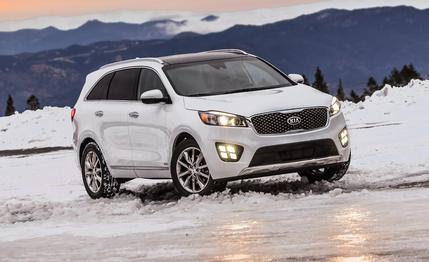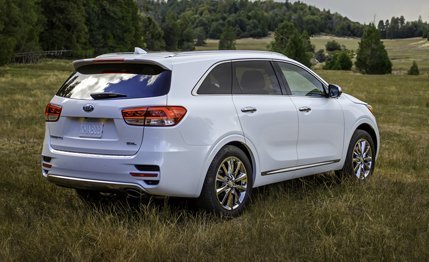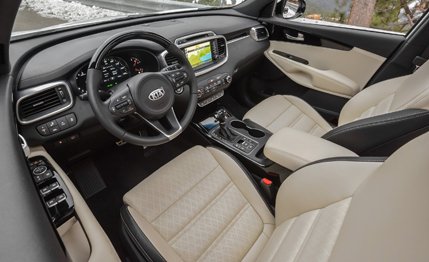 First Drive Review
First Drive Review
Kia invited us up to Lake Tahoe to sample its new Sorento in what they feel is the CUV’s ideal playground. The Korean automaker envisions the Silicon Valley brigade hopping in their Kias for a trip across the flatlands and up the hill. You know, because ruining San Francisco wasn’t enough for them. And climbing gyms can’t contain them forever. Oh, Fredo Corleone, be thankful for your little boat trip. This isn’t something you’d want to witness.
At the end of its life cycle, the current Sorento still ranks third in Kia’s sales mix. The previous ute saw the Sorento move from a decent if slightly unrefined body-on-frame trucklet to a five-to-seven passenger unibody crossover. The new machine, on sale in January, sees Korea’s style leader attempt to cover a broader spread. A base-on-base 2.4-liter four-banger FWD model—called Sorento L—will only require a $25,795 tip of the coffer. Venture all the way up to the SX Limited V-6 AWD model and you’re going to need a substantially larger till: $43,995. (All-wheel drive is available for $1800 on every trim level except for the L.)

Yet the sweetest piece of real estate in Sorentoville is the 2.0-liter turbo-four AWD model, which starts in EX trim at $31,995. Yes, the six offers up to 5000 pounds of towing capacity against the huffed four’s 3500, but most Sorentos aren’t likely to see much in the way of tugging duty and the turbo four offers a lot of useful midrange punch, plus a slight fuel-economy bonus. We previously knocked Hyundai for sticking this engine in a model badged as “Sport,” but it feels wholly appropriate in the Sorento. The six, ensconced in some sort of NVH-sapping igloo, exhibits a faraway thrashing sound as it piles on the revs on the way to making its maximum 290 horsepower. It’s definitely not the six-pot sweetheart that Toyota offers in the Highlander.
Kia increased the use of high-strength steel this time around, with the stated goal being a Teutonic grade of body stiffness. The brand came pretty close. On the road, the Sorento drives like a heavier—it is a larger vehicle, after all—more muted Volkswagen Tiguan. The Koreans have finally decided steering is worth their attention, and if the new ute’s tiller isn’t as feelsome as the best German jobs, it’s a definite improvement over the disconnected numbness historically associated with Hyundai-Kia products. The chassis is well damped and predictable, and it exhibited no evil traits on snowy mountain roads. The brakes were easily modulated, even on questionable surfaces, and the whole machine exuded fundamental competence.

Downsides? Heavy rain confused the blind-spot sensors to the point that they disabled themselves and threw up a warning that repeatedly obscured the in-dash multifunction display, no matter how many times we canceled it. The second-row folding mechanism doesn’t operate with any particular smoothness, the available panoramic sunroof can impinge on headroom for taller second-row occupants, and the third row is strictly a kid zone.
But this is a mission-perfect vehicle. Like much of SiliValley, it’s design-focused and not quite as impressive as the hype—a problem endemic to the CUV class. Unlike San Mateo and Santa Clara counties, however, the Sorento offers real value for the money. If you’re looking to gentrify your driveway with a crossover, you’re not going to do much better than the Sorento in terms of financial outlay, style, quality, and capability.